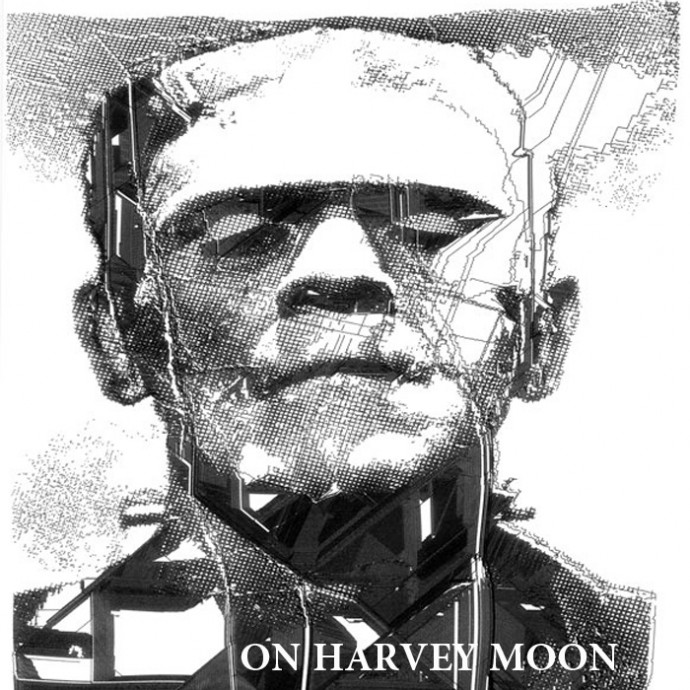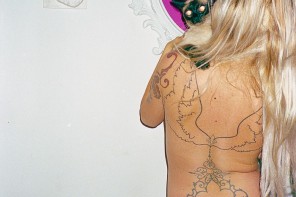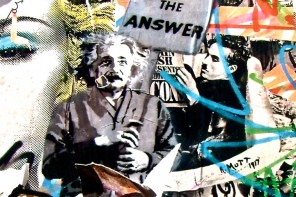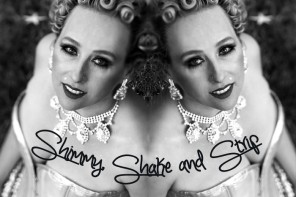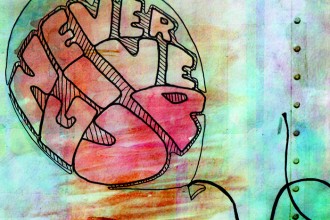Harvey Moon was only six years old when his parents asked him that age-old question, “What do you want to be when you grow up?” It was already clear. “An artist,” he said.
By combining technology, art, and philosophy, Chicago-based artist Harvey Moon offers an opportunity to think about the human world through a totally different perspective. Harvey tells Sensa Nostra his take on the relationship between technology and art, as well as on the role of the artist.
My process began by creating tools for making new photographs. Moving from film to digital photography totally transformed my style. On film, there was a limitation: thirty-five exposures. I had to shoot manually and slowly.
When I got a digital camera, its infiniteness was a revelation. I could take four thousand photographs and still have space on my card for more. With this newfound endless capacity, I started photographing with unique tools and methods. For instance, I photographed straight down, and in exploring that method, I made new tools and ways to hold the camera—most significantly, a big pole that held the camera from 15 feet up facing straight down, and a 13-foot tripod. The tips of the tripod legs were visible in many of the photographs. There was something interesting about the tool becoming part of the artwork; not just being something that helped make the images, but something that was integrated into the work. In the end, the tool had its own say and influence. An acknowledgement of the character of the tool that is often forgotten. When you use a camera, you are working with it. It’s not taking the photo for you, and you aren’t taking a photograph without it. The final image is the product of the collaboration of the camera, the mechanism and the electronics embedded within it, something pure and genuine that the photographer has chosen to portray. A lot of people don’t consider that.
This method of photography, the method of creating new tools and ways of creating new images that couldn’t be done before, became my fascination. This was a new outlet. Suddenly there were no boundaries, no barriers. Capturing a frame was too limiting and I wanted to expand that reach. So I built tools to do panoramic images, and then moved into video work, which is where I introduced more technology and incorporated a lot of programming. There was a nice middle ground; a balance between something physical, tactile, something with software, and something that was outputted—whether on paper, on a screen or projected.
When I have a mission or something to accomplish, I’ll learn whatever I must to achieve my goal—things that I never went to school for. That could be trigonometry or electronics. Though I’m definitely not good at math, the learning process is incremental, gradual, and achieved simply via the Internet. For the drawing machine, I started with parts that I pulled from a printer. I asked myself, “How do I get this to move, how do I connect this with a computer?” Essentially, how do I take baby steps? The first time I saw it move on its own was a magical moment. From there, it got easier. “Ok, so it does a line. How do I get that line to turn?”
The project actually began six years ago, with two hand-held pulleys on the wall. It was a great hit. All my friends would come over and we moved the pen around (with difficulty, due to all of the mathematics that were involved in getting that pen to move). After making some interesting abstract pieces, I realized the machine was not a good method for drawing. But that sparked something. The mechanism—this very simple shape with two pulleys and one string and a weight—produced images on the wall. The way it moved was kind of magical. It had a life of its own. Unlike an arm or a printer, it could not be placed in the world. It had its own personality, its own character, its own flaws, and its own movements.
It was collaboration: when I did something, it responded. Maybe it moved how I expected, or not, perhaps better—and then I would do another action. So it was a call and response; a learning experience with both many failures and new discoveries.
One of the big reasons why a lot of people shy away from this kind of work is that it is easy to fail. If you aren’t okay to stand up and tackle it again and figure out how to make it work better, it is just going to fall through your fingers. It is a more challenging medium because there is a binary—meaning it works electronically or it doesn’t—unlike painting or drawing, where it is up to your own mastery. But in the last couple of years, the drawing machine has evolved. For me, it has become a medium, a tool, and a method for producing work without one way of using it. Like with a pen, a mark can be made in a hundred different ways. If you are a painter, your paintings will change over the years, what you paint will change, and how you paint will change. How I use the drawing machine has changed as well. I have discovered that I can use this technology to accentuate the differences in the way that it works and way that we work.
For example, working with maps was one way that computers could totally confuse understanding our world, but in effect also reveal something really beautiful. In a Google map piece I did, I wanted the map to create its own world, create its own land, produce its own islands—and the way it does that is by grabbing different pieces from around the world and combining it in its own way. It creates new land mass, without knowing where or what it is, or knowing anything about it at all. The newly created land map is not at all representative of any place in the world, but it looks beautiful and originates in reality. So real information is being used and it is producing its own result, its own abstraction from that information. That lack of defined communication also produces something really beautiful from the earth, from something real and tangible. There is always that seed, a tie-in from something real that we can put our finger on, to something that it is reinterpreting or recreating and reimagining and reproducing. So, though its drawing route may be inefficient or completely misunderstood, it reveals something the human eye may have never seen before.
It is hard to avoid the reality that we are human beings. All of my work connects our problems in connecting with mechanical and electronic technologies as humans. There are so many interesting concepts that we can explore regarding how our world has changed due to the interaction of these technologies. Technology has changed how we think and how we are in a big way that is at a core of a lot of my thought processes. The works I develop are aided and produced and created by tools and technologies, but it is always for a better or different realization as humans. It is always something that I want to bring back to our reality, the way that we think and the way that we integrate with the world around us.
My piece “Persistence” (an interactive piece that records external movement and erases it seconds later), was another extension of that, of the fleeting moment rather than the extended one. It was almost in the opposite vein of the drawing machine, which is very gradual and produces an image on paper that is tactile and permanent and archival. This is a piece that produces one image which then disappears. It is fleeting, and the minute that you try to remember it, it’s gone. There is this play with a robot that has no concept of memory and no idea of memory, but through the material and technology it creates what it thinks might be memory, what it thinks might be similar to our memory. In that way, it is kind of failing, but also kind of succeeding. Through our own interpretation or understanding of it, we also come to realize our own abilities of memory; our own reliance on externalized memory; our own futility in remembering and our need for a photo album on our phone; phone numbers; faces that are so close to us; maps. For me, “Persistence,” and my work in general play on our own reliances, our own inabilities, and that ever-increasing change that is happening in the world.

